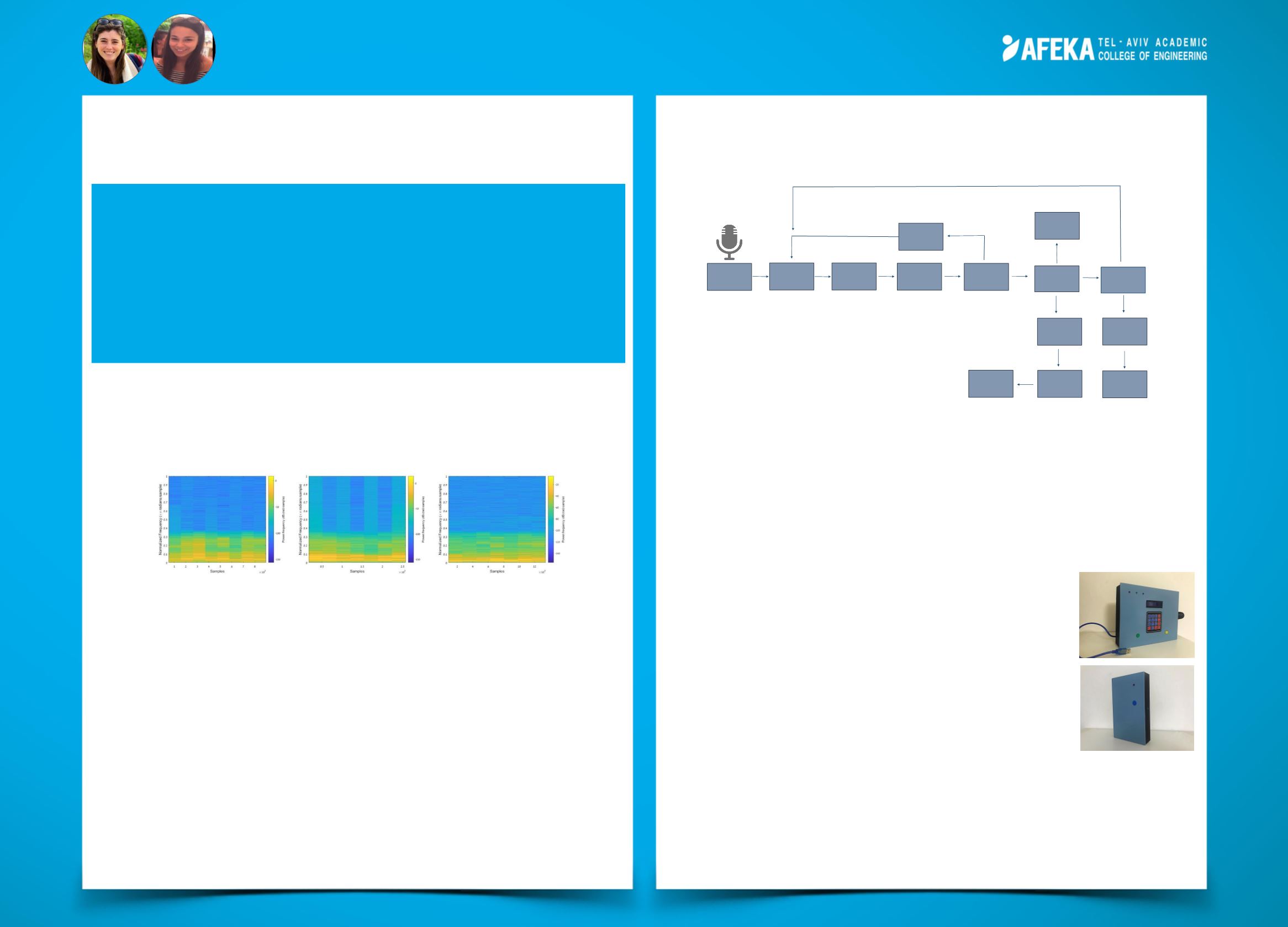

CrySense
DEVICE FOR MONITOR AND CLASSIFY INFANTS’ CRY
Background
Crying is the only expressing for a baby using the "language" (cry) which develops
until the first year of his life. The ability of hearing and understanding the types of cries
allows the parents good responsiveness to their baby's needs. Each type of cry has
its own specific signature, which can be detected by acoustical spectrometry.
Hearing loss, also known as hearing impairment, is a partial or total inability to hear.
Around 466 million people worldwide have disabling hearing loss. It may result from
genetic causes, complications at birth, certain infectious diseases, chronic ear
infections, the use of drugs, exposure to excessive noise, and ageing.
There is a gap between the ability of adults to understand baby's needs especially
among deaf community. Due to lack of experience or inability of hearing the cry, the
communication with the baby is harmed.
Parents are not always understanding their baby, but even the try, affects the baby in
terms of feels desirable, important and valuable. This is the basis for healthy
communication between the baby and his parents and builds infant's self-confidence
and parents’ positive image. From baby’s perspective, greater understanding by the
parents, perceived as a positive and reliable character, which has a long-term affect
on the baby.
The system
The prototype combines a device, a remote and an algorithm. The algorithm has two
working modes. The first working mode is an integrity test.
Bar Segal, Inbal First
Advisor: Yirmiyahu Hauptman
Medical Engineering
The second mode is work mode, which initiates real-time monitor of baby's
environment by continuously sampling sound using the microphone First, the
recording is being processed and its spectral characteristics are used as the input for
a binary classification model, which classifies between two groups, ambient noise and
crying. If the recording is cry, it is being sent for additional analysis.
In the second stage, another classification model is distinguished between three
different types of cry: hunger, tiredness, and pain. The class is obtained along with
classification score that must pass a predefined threshold, else the recording will be
classified as an unknown cause of cry. The screen will then display an option for the
user to create a custom label for this cry, and the recording will be stored in the
database with the appropriate label. Monitoring system is then paused for few minutes
and after this wait, the system will continue to sample sounds. After updating the
database and by using machine learning methods, algorithm’s performance will be
improve for the specific baby.
Results
The monitoring system in is able to monitor in real-time and separating cry and
ambient noise with up to 99% accuracy and classify the type of cry itself into its type
in less than four seconds with an accuracy of 86%. A dedicated function allows to train
the model based on the new recording stored in the database. The functions able to
store the new recording according to the new label that was inserted by the user.
The device monitors baby’s cry in real-time and
classifies it to various types, using machine learning.
The essence is to improve or replace the
communication between the user and his baby,
particularly for hearing impairment users. The
system is easy-to-use, contains accessible means
and suitable for baby caregivers.
The device is the main core of the system and consists of a
MicroControlrer Arduino UNO and components for visual, for
sound, for user interface and a radio frequency component for
communication with the remote-control. 3D printed cover is
protecting the hardware of the device and would be hanging on a
crib by straps. The device connects by a cable to the PC, which
supply the power to the system. The remote is mobile, and
provides accessibility for deaf and hearing impaired by alerting
when the baby starts to cry. The remote consists MicroControlrer
Arduino UNO and components which based on light, noise and
vibration, to attract the attention of the user. A battery supplies
power for the remote, as required to enable the user of mobility.
pain
Hunger
tiredness
Save the cry
and update
database
Microphone
is ON (on PC)
Sampling of
sound in
real- time
Classified as
noise or
crying
Delete
current
recording
Classify the
cry
Display
request to the
user
User tag the
new cry
Save the cry
and update
database
Training the
model
Noise
Signal
Processing
Extract
features
Cry
Display result
on screen
Remote alarm
system
Predefined
cry
Unknown cry
















